Abstract
1. The metabolism of 5-hydroxyindoleacetaldehyde derived from 5-hydroxytryptamine incubated with tissue homogenates was studied as an indicator of aldehyde dehydrogenase and alcohol dehydrogenase activities.
2. In liver and brain from rats, there were indications of the presence of one or more aldehyde dehydrogenases which were stimulated by NAD+ to a greater extent than by NADP+.
3. In liver from rats, there were indications of the presence of one or more alcohol dehydrogenases, which were stimulated by NADH to a greater extent than by NADPH.
4. In brain from rats, there were indications of the presence of one or more alcohol dehydrogenases which were stimulated by NADPH to a greater extent than by NADH.
Full text
PDF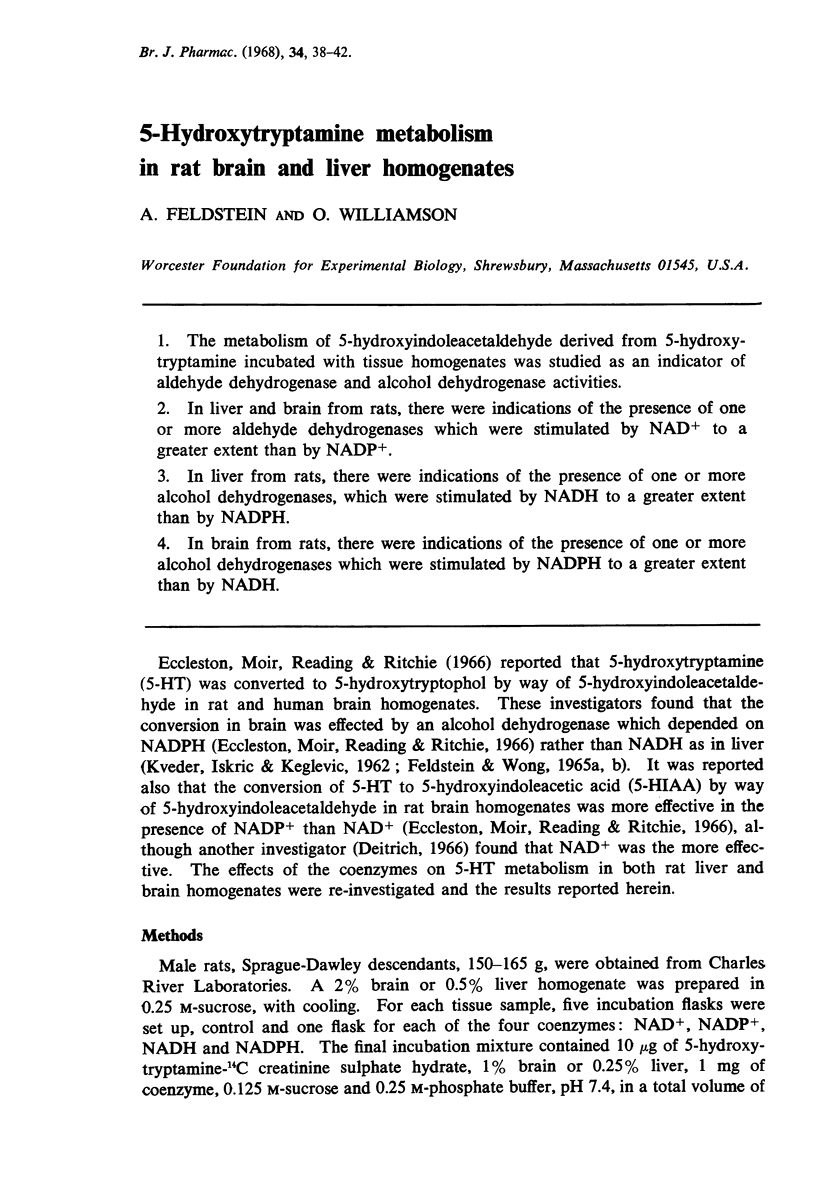
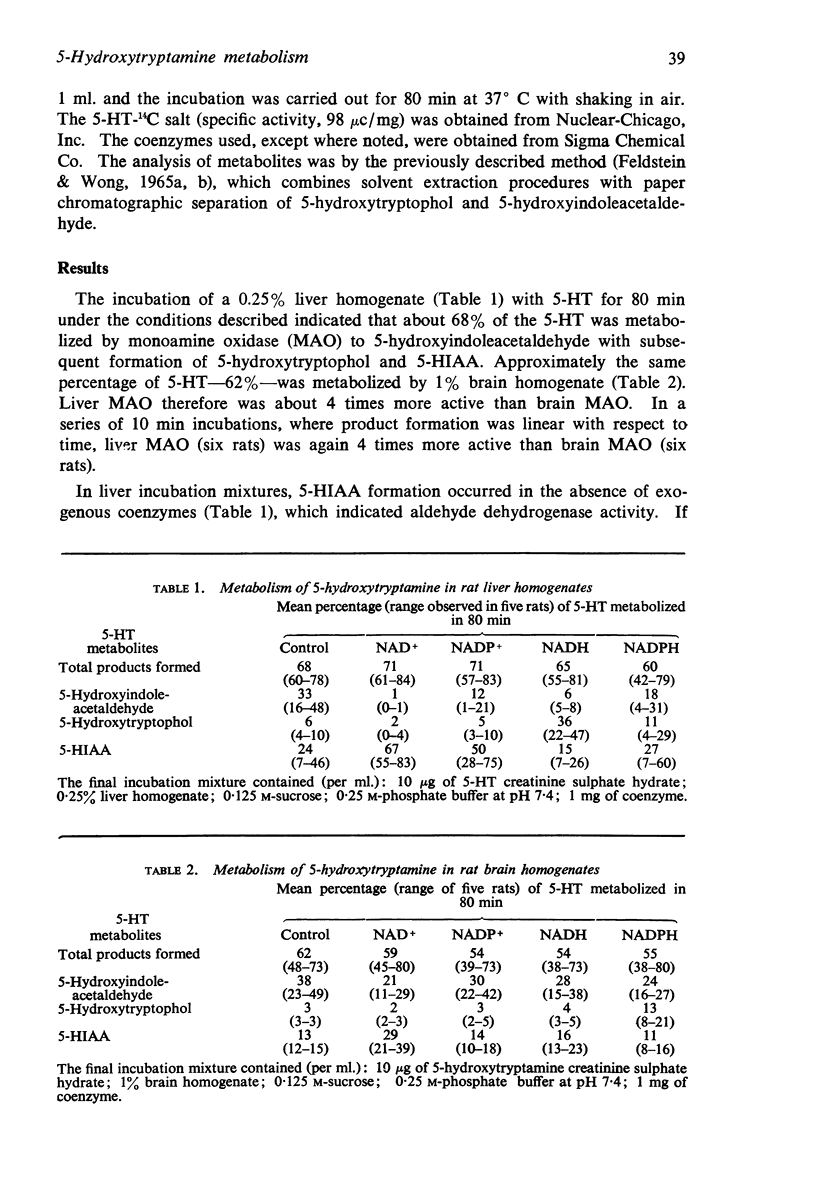
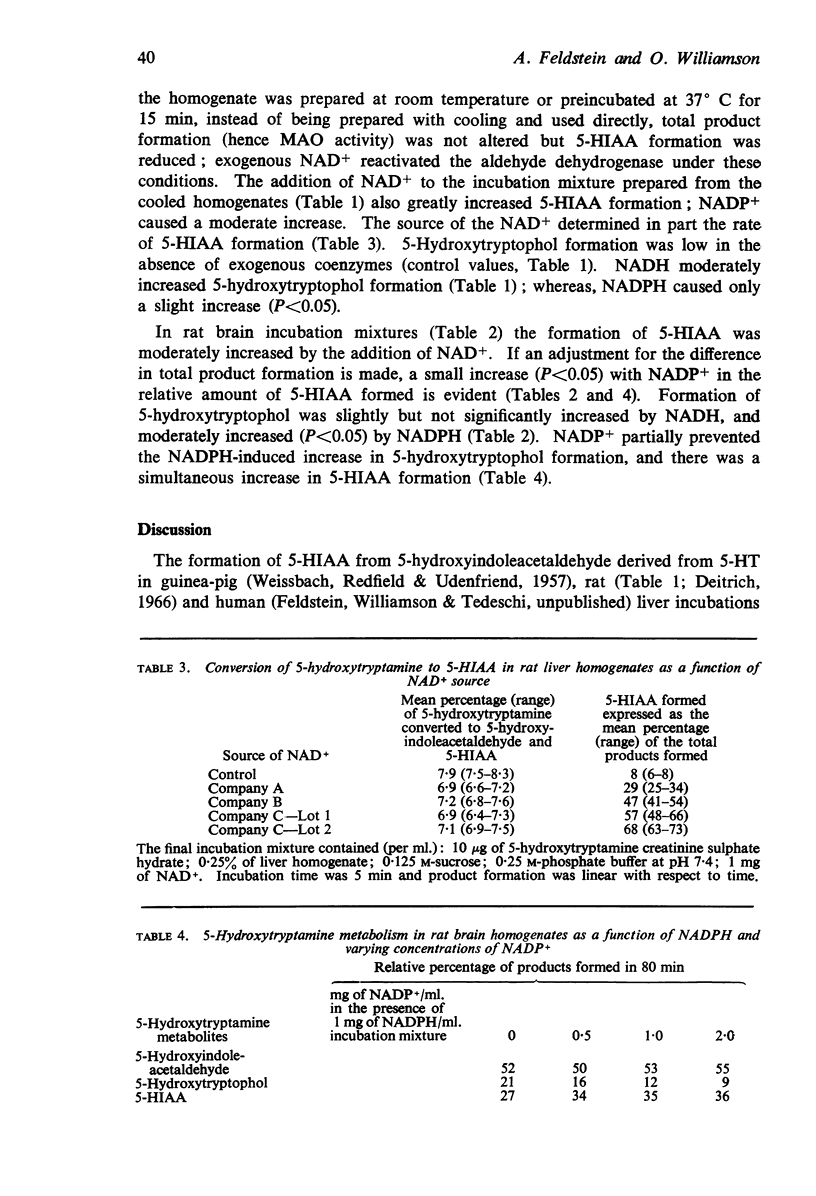
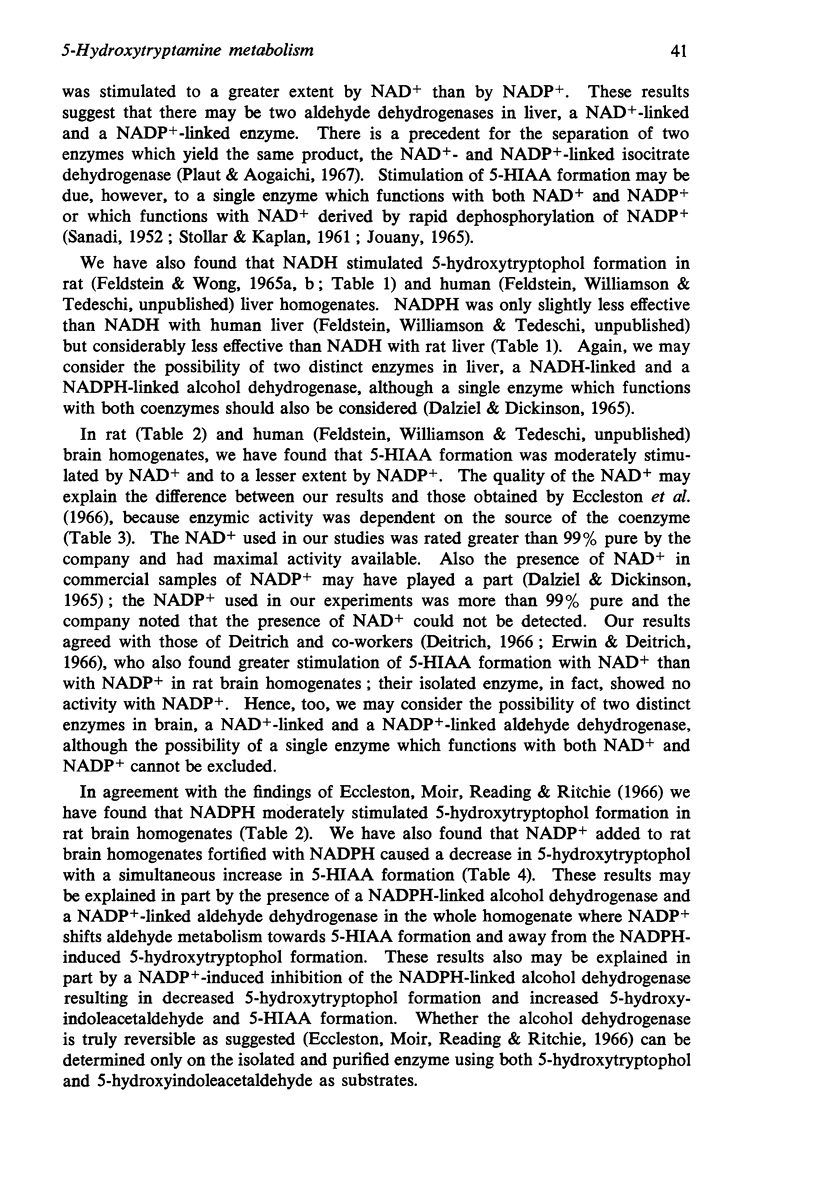
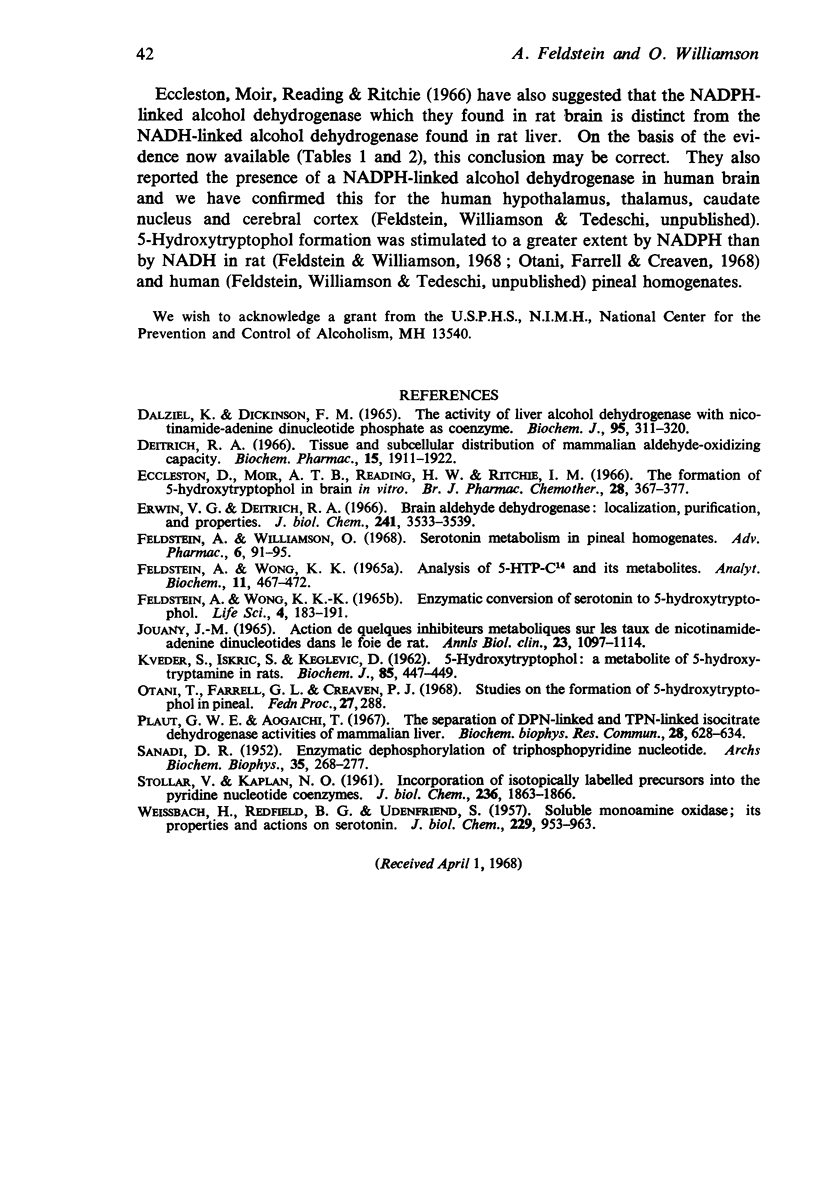
Selected References
These references are in PubMed. This may not be the complete list of references from this article.
- DALZIEL K., DICKINSON F. M. THE ACTIVITY OF LIVER ALCOHOL DEHYDROGENASE WITH NICOTINAMIDE-ADENINE DINUCLEOTIDE PHOSPHATE AS COENZYME. Biochem J. 1965 May;95:311–320. doi: 10.1042/bj0950311. [DOI] [PMC free article] [PubMed] [Google Scholar]
- Deitrich R. A. Tissue and subcellular distribution of mammalian aldehyde-oxydizing capacity. Biochem Pharmacol. 1966 Dec;15(12):1911–1922. doi: 10.1016/0006-2952(66)90220-6. [DOI] [PubMed] [Google Scholar]
- Erwin V. G., Deitrich R. A. Brain aldehyde dehydrogenase. Localization, purification, and properties. J Biol Chem. 1966 Aug 10;241(15):3533–3539. [PubMed] [Google Scholar]
- FELDSTEIN A., WONG K. K. ENZYMATIC CONVERSION OF SEROTONIN TO 5-HYDROXYTRYPTOPHOL. Life Sci. 1965 Jan;4:183–191. doi: 10.1016/0024-3205(65)90118-9. [DOI] [PubMed] [Google Scholar]
- Feldstein A., Williamson O. Serotonin metabolism in pineal homogenates. Adv Pharmacol. 1968;6(Pt A):91–96. doi: 10.1016/s1054-3589(08)61159-x. [DOI] [PubMed] [Google Scholar]
- Feldstein A., Wong K. K. Analysis of 5-HTP-C-14 and its metabolites. Anal Biochem. 1965 Jun;11(3):467–472. doi: 10.1016/0003-2697(65)90066-7. [DOI] [PubMed] [Google Scholar]
- KVEDER S., ISKRIC S., KEGLEVIC D. 5-Hydroxytryptophol: a metabolite of 5-hydroxytryptamine in rats. Biochem J. 1962 Dec;85:447–449. doi: 10.1042/bj0850447. [DOI] [PMC free article] [PubMed] [Google Scholar]
- Plaut G. W., Aogaichi T. The separation of DPN-linked and TPN-linked isocitrate dehydrogenase activities of mammalian liver. Biochem Biophys Res Commun. 1967 Aug 23;28(4):628–634. doi: 10.1016/0006-291x(67)90360-9. [DOI] [PubMed] [Google Scholar]
- SANADI D. R. Enzymatic dephosphorylation of triphosphopyridine nucleotide. Arch Biochem Biophys. 1952 Feb;35(2):268–277. doi: 10.1016/s0003-9861(52)80006-2. [DOI] [PubMed] [Google Scholar]
- WEISSBACH H., REDFIELD B. G., UDENFRIEND S. Soluble monoamine oxidase; its properties and actions on serotonin. J Biol Chem. 1957 Dec;229(2):953–963. [PubMed] [Google Scholar]


